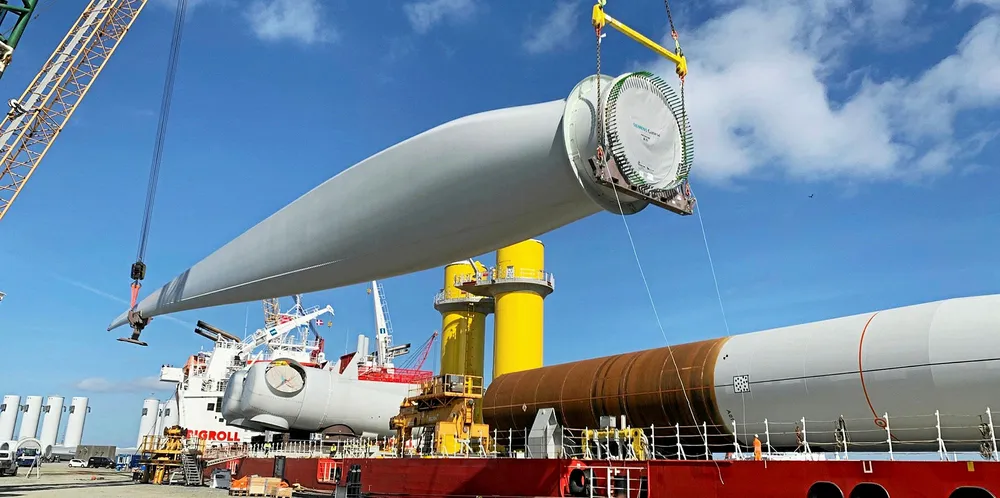Expanding Jones Act to offshore construction would 'chill' US Atlantic wind growth
AWEA warns again amendment that would add to current requirement that goods shipped between American ports use US-flagged vessels

Potential expansion by US Congress of the century-old Jones Act to require that construction at sea be done using US-flagged installation vessels would have a “significant and immediate chilling effect” on the nation’s emerging offshore wind industry, according to industry trade group the American Wind Energy Association (AWEA).
In several letters to lawmakers and in a blog post on its website, AWEA said that the provision – which adds to the current requirement that any goods shipped between American ports use US-flagged and -crewed vessels – could potentially put in jeopardy more than 14GW of offshore wind projects over the next five years and the thousands of jobs dependent on that expansion.
“Being required, under the proposed language, to request approval for use of heavy-lift installation vessels with the possibility of having to switch equipment months before installation activities commence and no process for doing so is neither workable nor practical,” AWEA CEO Tom Kiernan wrote.
“There is really no way to spin the fact that a waiver system would make it impossible for offshore wind projects to secure heavy-lift installation vessels in a timely manner and, even if they do, have certainty that they would ultimately be able to use them.”
The sponsors of the expansion to the Jones Act to include at-sea construction have included an amendment in the 2021 National Defense Authorization Act that the Senate is expected to approve, possibly later this month.
The Jones Act presently requires goods such as wind farm components conveyed between two US points be transported on ships that are built, owned and operated by Americans. A turbine foundation attached to the outer continental shelf is defined as one such point.
In practice, this means that foreign installation vessels that the nascent US industry must rely upon for early-stage projects cannot load at east coast ports and then transfer or install cargoes at project sites.
Instead, they must remain offshore and be ferried componentry by Jones Act-compliant barges, an arrangement that can be expensive and time-consuming.
Still, AWEA says its members intend to be fully compliant with the Jones Act, strongly support the US domestic maritime industry, and recognise its role maintaining national and economic security.
The US industry typically secures installation contractors and these purpose-built jack-up vessels years in advance, due to their limited numbers and strong competition to charter them.
There is no easy or quick way to increase availability in the US of these vessels given they take years to manufacture and cost several hundred million dollars each. Dominion expects to have the first Jones Act-compliant jack-up in service in 2023 for installation of 14MW turbines in its 2.64GW Coastal Virginia Offshore Wind project.
The House bill approved last year does provide a waiver process for use of US-flagged installation vessels but AWEA contends it would be “unworkable”, in part because of concerns that the federal Department of Transportation lacks “sufficient expertise to assess whether certain vessels can perform the needed heavy lift functions safely”.
The trade group said there is no way for project developers to know if the waiver process will be “triggered” for heavy-lift installation activities for offshore wind energy and, if so, whether the paperwork would ultimately be granted.
The trade group noted that the US offshore wind sector is already rife with regulatory uncertainty and financial risk, and this legislative language would only add to this difficult business environment, adding capital-intensive offshore wind projects cannot be financed, planned, and constructed “with this type of uncertainty”.